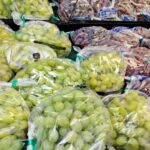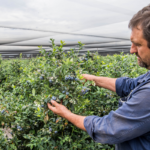Australian banana study makes case for BBTV control
An Australian research project has found banana bunchy top virus (BBTV) could be eradicated in the country for a justifiable cost. 
The Cooperative Research Centre for National Plant Biosecurity (CRCNBP) report argues ongoing quarantine and hygiene procedures could 'exclude' the virus and save between AUD$15.9-27 million (US$16.5-28 million) in annual losses, depending on different incursion scenarios.
The CRCNBP team, led by Department of Agriculture and Food Western Australia senior economist Dr David Cook, used Monte Carlo computer simulation to predict different outcomes in the report 'Predicting the Benefits of Banana Bunchy Top Virus Exclusion for Commercial Plantations in Australia'.
"For these exclusion benefits to be reduced to zero would require a bunchy top re-establishment event in commercial banana plantations three years in every four," the report said.
"Sensitivity analysis indicates that exclusion benefits can be greatly reduced through improvements in disease surveillance and incursion response."
The report highlighted BBTV was one of the most economically important diseases facing Australia's AUD$492.2 million (US$511.6 million) banana industry, causing stunted growth with infected plants rarely producing a bunch.
"The virus is transmitted by the banana aphid (Pentalonia nigronervoza), as well as through infected plant suckers and other plant tissues used in banana propagation."
Australia has a fraught history with BBTV, which arrived in the early 1900s and destroyed 90% of banana crops in the states of Queensland and New South Wales in the 1920s. The industry gradually recovered through the eradication of infected plants and controls on the movement of planting material from affected areas.
The report said a five-year Banana Plant Health Improvement Project in 1993 achieved substantial reductions in the prevalence of the virus, but outright eradication was not achieved.
The paper pointed to the eradication of disease Black Sigatoka in Australia betwen 2001 and 2003 as an example of how appropriate quarantine measures could be successful, using similar tactics to those proposed for BBTV including intensive de-leafing and fungicide treatment in rotation at a cost of AUD$17 million (US$17.6 million).
"If this figure can be considered broadly representative of a relatively small scale eradication program, let us hypothetically assume that the exclusion of BBTV might involve a cost more than three times this amount.
"Even if exclusion costs from commercial production areas are as high as AUD$60 million (US$62 million) and it takes a full five years to remove the virus completely, our results indicate that returns to the industry would be highly favourable."
Photo: DAFF Queensland












































